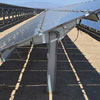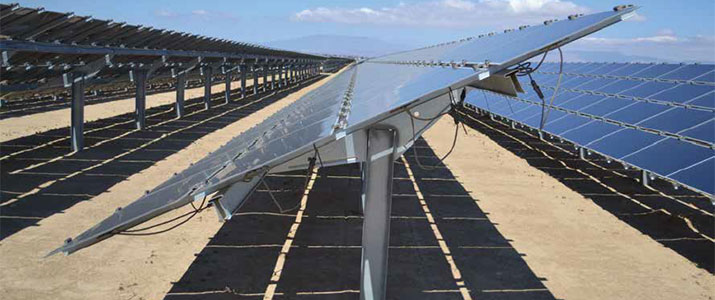
An American Dream
- By Ralph C. Jensen
- Aug 01, 2013
 Everyone loves a good story, especially if there is a bit of patriotism, some struggle and a sprinkle of romance. And, throw in a flight from communist dictatorship to America, it might mean tears to your eyes.
Everyone loves a good story, especially if there is a bit of patriotism, some struggle and a sprinkle of romance. And, throw in a flight from communist dictatorship to America, it might mean tears to your eyes.
Levy Acs is passionate about the United States, and his story focuses on the opportunities found in this country. Getting here was the struggle. His love story is about being patriotic even before he arrived, and, of course, his wife and family, and his own slice of the American dream.
The Journey
Acs was born and raised in Transylvania, a territory part of Romania, so he knows communism, and party officials knew him, as well. It wasn’t a friendly relationship, as Acs had felt the fury of communist party officials twice before he was able to escape the country, succeeding on his second attempt. His first attempt was humiliating. After he was caught, he was handcuffed and taken from classroom to classroom at his high school, displayed as a criminal against the state. Students were told, “You don’t want to be like this criminal. Stay in school and live the communist dream.”
Acs’ dream, however, was much different. He knew he wanted to come to America. His journey took him to Germany, England and finally Sweden, before immigrating to the United States, seeking political asylum.
Once in the United States, Acs tried his hand at numerous vocations, including auto mechanics. It was his future wife (one of the students in the classroom who saw him being paraded around as a criminal to communism), who suggested that he return to university studies and achieve the technical education that would allow him to reach for his American dream.
Acs graduated from New York Institute of Technology as one of the top three in the graduating class, and with perfect marks. Soon, ADEMCO came calling, offering jobs to the top three in the graduating class.
This American dream is now about to take shape.
Working with Honeywell/ADEMCO, Acs was able to ply his trade in the access control vertical, but the toll was heavy on his home and family life. Acs traveled, a lot. Missing out on his twin boys’ growth and family life was more than he wanted to endure. So, in March 2007, along with Avi Jacobi, a family friend in the New York City real estate business, a successful business plan was put in place and an office opened with a telephone and a cardboard box as a “desk.”
“I called a lot of my friends and contacts that I thought was the A list, or good people, to start the business,” Acs said. “Nothing happened. I went to the B list, and people bent over backwards to help me. There was a small job here, and another job there. Pretty soon, things really began to take off.”
By October 2007, the cardboard box gave way to building a staff of what is now more than 100 employees. The principle office remains in New York, but American Integrated Security Group (AISG) has bloomed into offices in West Palm Beach, Fla., Medford, N.J., and Phoenix, where the sun belt projects are planned and executed.
“Service is our most important business relationship,” Acs said. “We want to grow organically and be one of the leading, independent, national integrators. We are focused on retail, energy and critical infrastructure.”
One of their success stories came with integration at Burlington Coat Factory stores. All 186 stores needed an overhaul. The company was using analog equipment, and the deal called for a transformation to IP video surveillance. This was a perfect story for AISG, because they understood the necessity for a networked security system.
“When we work with a company, such as Burlington Coat Factory, we become their partner; no subcontractors,” Acs said. “We work at night, so we can stay out of their retail timeframe, and we make sure an individual store takes only four to five days to complete.”
The install crew completed their work in the prescribed timeframe, deploying Vivotek and Axis Communications cameras with Wavestore as the recording platform.
The floodgates of the American dream continued to flow. Acs’ idea of business was to not necessarily hire security specialists, but people who knew and understood each vertical. He hired 10 regional account managers, like Michael Bennett, who understood the energy industry.
The Energy Market
Mike Bennett, the director of sales, said that the energy market is a key vertical for AISG, which has a perimeter security installation at Alpine Solar Generating Facility in Lancaster, Calif. The project is owned by NRG energy and consists of more than 300 acres, filled with an impressive, solar array. Keeping the expansive site safe and secure rested completely on the shoulders of Acs and his team.
At slightly more than 9 miles in circumference, it takes a lot of wire to secure the site and several very powerful IP video surveillance cameras to make it all come together. Plus, AISG maintains a perimeter alarm and surveillance at this site through its New York headquarters, putting the spotlight on remote monitoring.
“We’re very interested in the energy vertical,” Bennett said. “Because of our expertise in this industry, and our knowledge of the security business, we’ve become the go-to security integrator for this type of installation.”
AISG also is environmentally conscience, devoting much of their energy to this vertical to make each install as efficient as possible. Once an install has taken place, the partnership kicks into another role as AISG begins to monitor the site, giving the end user, onsite security during the nighttime hours.
“Work in the solar industry is plentiful right now,” Acs said. “The government has provided subsidies for the alternative energy field, and right now, we’re growing our partnerships with several energy companies.”
Located in northern Los Angeles County, Alpine will generate enough energy to meet the annual needs of nearly 53,000 homes at peak daytime capacity, producing 66 megawatts of power. Because the facility produces electricity without fossil fuels, it helps avoid the annual emission of 36,000 tons of carbon into the atmosphere, equivalent of taking 6,600 cars off the road.
Securing the Facility
Security at an energy site like this is vital to the end user, who depends upon secure critical infrastructure, deterring theft of copper and any possible disruption of power for customers.
AISG has strung fiber on the perimeter fence, with active-loop sensors, to detect if the fences have been compromised. Should that happen, FLIR pan and tilt cameras immediately swing into action and focus on the point of disturbance. If a sensor wire is cut, the redundant system still allows central station employees to view any problems.
Each camera pole (also solar powered) provides voice down alert, in case of an intruder, and a flashing light beacon to warn would-be vandals that they have been spotted inside the perimeter.
The fence line has a ring of a single fiber optic cable that is used to receive alarms and is responsible for all communications, including feeds to the cameras. This fiber is part of the main trunk line around the solar array. It also is part of the Aiphone VoIP and video at the entrance gate. The other truck cable has 36 strands of fiber optic, where 25 of the cables are part of a particular zone on the fence. There are 11 spare fiber optics that could ensure growth at the site, if and when that time comes.
AISG’s work had to be precise and pure as the company continues its work in the energy sector. Alpine is one of eight large-scale photovoltaic solar facilities, and at one time was the largest facility in the state. The active loop sensor plays a key role in crime deterrence because no one, to date, has tried to enter without proper authorization. That’s not to say that there isn’t a criminal element eyeing copper, though.
Since AISG deployed perimeter security to the site, there have been no break-ins or trespasses, however, that wasn’t the case before security was up and running. There were several break-ins at the site, which caused significant problems to the solar array. Other sites where a solar array had been deployed also had trouble with trespass, theft and vandalism.
A few years ago, a would-be bandit tried to pry open an electrical collection tower outside the facility. The tower still stands, albeit with new stainless steel guard panels, but the would-be criminal, using a chain saw to cut the wires, died, making his way to the after-life in short order.
The main power feed was cut one other time, prior to the site being online with its security operations.
Also, according to Mike Womack, vice president at AISG, a site in New Mexico had trouble with vagrants that were living in the desert, presumably on or very near the solar array. Without effective security, the site became a hostile battleground with an exchange of gunfire.
AISG has rallied to each of these sites with perimeter protection.
The company also writes in a twoyear maintenance agreement at most sites to keep the fiber optics running, and sending back clear images, when needed. The system works when the fence is shaken or rattled. Cameras turn and point to the location, so an operator can determine what caused the movement. The fiber optics learn what is normal movement, and the difference between that and someone trying to force their way in.
There also is an allowance for animals that run through the property and a high density of tumbleweeds that pile up against the fence. Any information that comes by way of a camera is sent instantaneously back to the home base in New York, where the central station operator reacts to any threat.
The New York-to-California connection has worked well for Acs, getting his business mobile and integrating security measures at various solar arrays in American deserts. He says it works well because he hand picks his employees, who share his vision of the American dream. Part of his American dream is paying employees what they are worth, and spending time with their families.
“If the family is happy,” Acs said, “so is the employee.”
While Acs and his team are busy outside of the New York area with security integration, the team has landed a contract to provide access control to more than 700 schools in New York City, as well as security and surveillance for the New York State Racing Commission for places like Belmont Park. His vision to reach America has come to fruition. His two years on the road to escape Communist Romania to Sweden, then to the United States has been an adventure of a lifetime, a story that he shares with his sons. The American dream is possible with hard work and a vision of success.
This article originally appeared in the August 2013 issue of Security Today.